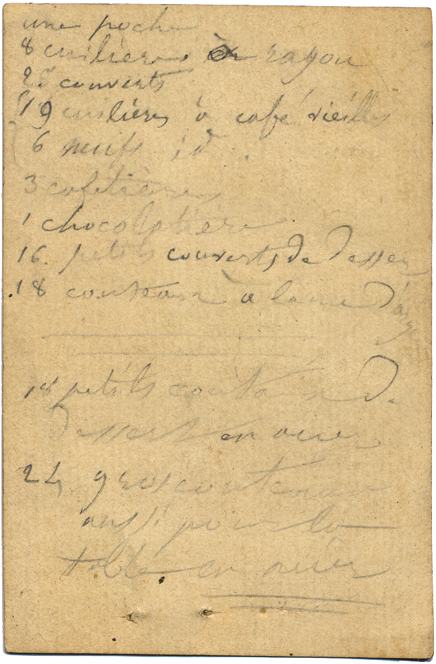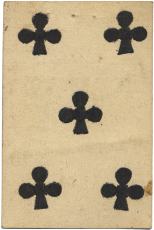****************
# 27
I
am Sherlock, you are Watson
Most secondary used playing cards carry words. They form a text,
for instance a note, an invitation, a message or a receipt. Sometimes the text
tells it all, however in many occasions it leaves me with a puzzle. Who wrote
it? Why was it written? To whom did somebody write it? Cards like that tickle my
imagination. Or I keep on looking for clues that might help to reveal the
picture. Each secondary used card tells a story, that is for sure. Some give
away their story easily, others leave you with no other possibility than to guess
what might be or could be the story. Like this card.
Let us examine the card step by step. It is obviously a 5 of Clubs, French and
according to the printing technique and paper it probably dates from the
second half of the 18th century.
The manuscript is in pencil. Most cards are written in ink, so that is a bit
odd. Why in pencil? I can think of two reasons: the person who wrote the text
was poor and did not have pen and ink or the card was written on a place and
in a situation that did not allow to use ink, like somewhere outside a
building or an office.
Now let us look at the text. It is written in French and it happens to
be a list of tableware:
 |
28 couverts (= sets of knife, fork and spoon)
16 small couverts for desert
18 knives (rest I am not able to read/translate)
18 small knives for desert
24 big knives also for the table
|
|
maker unknown, France, 1750-1800
playing card collection Gejus van
Diggele |

|
Well, so far it could be a list of properties that were on sale or
sold. Or it could be an inventory of some household. But every guess
gets a different meaning by the word that is written on top of the
list: une poche, that is French for a bag. Just this word puts this
list in a totally different perspective. Imagine all this beautiful
tableware, probably made of silver, all together in a bag? Who would
do such a thing? The only person who would do so would be a thief. So
I presume the card has been written by a police officer after a thief
was catched with a bag of loot. It also explains the pencil: it is
hard to believe that policemen in those days would carry a writing
set with ink. In their pocket they had a pencil and something to write
on, like a playing card.
Gejus
private
playing card investigator
****************

